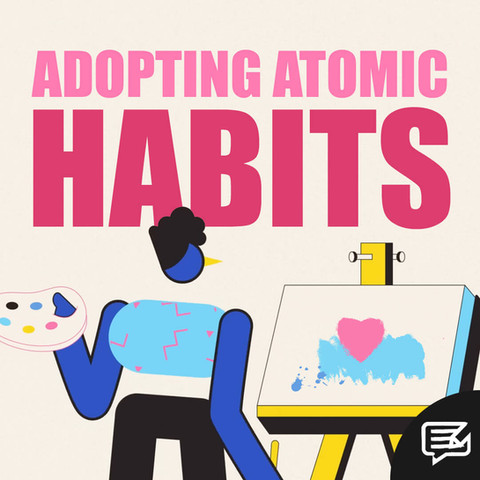
10.07.21
HOW EMBRACING DIGITAL COULD SAVE CHARITIES
The past 16 months or so have been unlike any other in my lifetime. At times, it’s been all too easy to focus on how the pandemic and subsequent lockdowns have affected our own lives: our daily routines, seeing friends and extended family, keeping the kids entertained on weekends…
But there have been more changes to our surroundings than we’ve perhaps noticed.



Take fundraising for The Royal British Legion, for example. Poppy sellers have been a fixture of UK high streets for decades. Come October, those red collection tins are jingling everywhere from schools to stations to supermarkets. But for the first time in the history of the Poppy Appeal, there were no face-to-face collections.
Instead their 2020 fundraising campaign was forced largely online, with The Royal British Legion website offering downloads of poppies for supporters to display in their windows.
So how have charities reacted in the face of the unexpected? As the pandemic escalated, how did they embrace remote working, online service delivery and digital fundraising? The Charity Digital Skills Report 2020 is a good place to start…
The foreword by Baroness Barran MBE, Minister for Civil Society reads:
“Coronavirus has fundamentally transformed charities' daily operations and the need to offer digital alternatives for everything from services to fundraising which has proven important now, more than ever. Indeed, this report shows that we are beginning to see some positive indicators of the sector using digital to innovate and adapt to the current crisis, with 66 percent of charities delivering all work remotely and 47 per cent collaborating and sharing digital learnings with others. These are encouraging steps that signal the sector’s adaptability and spirit of collaboration.”
Barran continues:
“Over the last few months, charities and wider civil society have worked tirelessly in their efforts to support vulnerable people and communities, and the sector has proven to be one of our greatest strengths. Boosting digital skills and capability will be central in bolstering the resilience of the sector through recovery as civil society continues to play a vital role in helping tackle the challenges and opportunities that lie ahead.”
Unsurprisingly, the report identifies the pandemic as the biggest cause of digital disruption in the sector during 2020. And whilst COVID-19 has instigated an acceleration in some areas of charities’ digital development, others have seen little to no progress.
The key findings from the report are eye-opening. These five statistics were particularly alarming:
1. Digital Strategy:
Just over half (51%) of charities still don’t have a strategy for digital (whether that’s a standalone strategy or integrated with the organisational strategy). This is similar to 2019.
3. COVID-19 challenges:
27% have cancelled services because either their charity or their users don’t have the necessary skills or tech.
8. Understanding users:
Just 8% of charities surveyed rate themselves as excellent at this (with 52% saying that they are fair and 39% poor).
9. Digital fundraising:
This is one of the weakest skills for charities, with 45% saying that they are poor at it.
10. Digital service delivery needs:
83% say they are fair to poor at digital service delivery (of these, 40% say they are poor), soaring from 60% last year and 53% in 2018. The fact that both fundraising and service delivery are gaps at a time when the sector is so dependent on digital is a worry.
A few things come to mind when reading these findings. Firstly, that a whopping 51% of charities do not have a digital strategy. That’s the sort of figure I would have expected to read at the turn of the century – not now, in the 2020s. Pandemic or no pandemic, this is clearly a huge area for improvement in charities. “Digital” isn’t a phase – it is the future, and charities (just like any business) need to embrace that future or risk being left behind.
But what does a “good” digital strategy look like? There’s no template for success, after all. I’m sure charities around the globe would love to replicate the success of 2014’s Ice Bucket Challenge, for instance, which purportedly raised over $220m.
Matt Saunders’ guest blog on UKFundraising examines what made the Ice Bucket Challenge so special:
“The first ingredient is the human element. The very nature of pouring water over oneself, on camera, to be put on the internet was effective at removing any pretence. It was authentic.
“Every squeal from the willing victim as they doused themselves with icy water made us shudder. Every laugh made us smile.
“It was this breaking down of barriers and enabling the viewer to connect with other people in this way - through harmless entertainment, even at the expense of complete strangers - that helped engage us in the campaign.”
Secondly, he notes, is the use of video - one of the most engaging mediums:
“Video can be shared on all social networks, is easily consumed and more engaging than static images or text. This might be a sad acknowledgement for some, but video is where the web is headed and the Ice Bucket Challenge hit the wave at just the right time.”
The “challenge” aspect also played a vital part. Each participant then challenged three friends to take part. Multiply those three by three and so on, and there was potential for exponential growth.
Lastly, Saunders points to the value of celebrity endorsement with everyone from Bill Gates to Lady Gaga participating. Something that we see time and time again from the success of Children in Need and Comic Relief campaigns in the UK.
The sad fact is, charities can tick all four of those boxes (and then some!) and still not enjoy the success of the Ice Bucket Challenge. What’s more, the economic implications of the pandemic have led to much-reduced charitable giving, with business closures, job losses and furlough impacting every sector. Donating to charity has become a luxury that many in society can no longer afford.
In July 2020, Blackbaud (a cloud software company that supports non-profit organisations) published their annual benchmark report - The Status of UK Fundraising - in partnership with the Institute of Fundraising. It makes for fascinating reading. The data was collected in May and June 2020 via an online survey of 66 questions. A total of 1,990 respondents completed the survey from a wide range of charity types and sizes. The report states:
"Organisations have had to adapt their fundraising strategy to counteract the effects of the pandemic, with virtual fundraising being one of the main solutions tried across the sector to boost income.
• 44% of organisations were found to be willing to innovate and try new things.
• 60% of respondents have done some form of virtual fundraising during the pandemic, with over three-quarters using it for the first time.
• Overall, 64% found virtual fundraising to be a good way to attract new supporters."
What’s more, 44% of respondents reported an increase in online donations.
The report continues:
“Regardless of their organisation’s size, 70% of respondents believe that recovering from the impact of COVID-19 will be their biggest challenge over the next three years. This was closely followed by 69% having concerns that the economic situation will result in fewer donations, a sentiment that echoed the opinions shared in our 2019 survey. 55% also acknowledged that one of the main challenges in the year ahead will be adapting to new ways of fundraising.”
Social distancing measures have also taken their toll on the less digitally adept. 65% of respondents believe that social distancing will lead to an overall decrease in donations from events and challenges, with a further 56% predicting their event income will be impacted long-term. 62% anticipate that the pandemic will have a negative impact on their ability to raise income full stop.
One question posed to participants is particularly noteworthy: “Have you or your organisation been reluctant to appeal to your supporters for funds during the pandemic?” For me, this question turns the idea of charitable giving on its head.
Somewhere in the Bible, there exists a variant of “Ask, and you shall receive.” But what if charities no longer feel comfortable asking? The need for donations hasn’t disappeared. Their mission still exists. But all of a sudden, the notion of channelling Oliver Twist and asking for more is morally repugnant.
Indeed, 61% of respondents stated they were concerned about the economic impact on their supporters, with a further 40% expressing concern about the health and wellbeing of supporters.
But Sally Falvey, Head of Corporate Marketing at Blackbaud, sees things differently:
“It’s unsurprising to see so many respondents expressing concern about their supporters’ health and economic wellbeing – we work in a highly empathetic and caring sector. Research from JustGiving shows, however, that there has also been an increase in donations to appeals launched by charities (particularly those relating to COVID-19). At a time when many feel powerless and unsure how to help their community and wider society, it could be that giving to non-profits provides people with some sense of purpose and control. This indicates people are ready and willing to give if presented with the right ‘ask’.”
Thankfully, there are a number of ways to present the right “ask” - something more and more charities are getting to grips with as the pandemic rages on. Contactless donations, “give as you shop”, fundraising through social media, and the online streaming of exercise classes, virtual challenges and quizzes are all opportunities with enormous potential.
According to Blackbaud’s report:
“76% of organisations have used at least one virtual fundraising initiative for the first-time during lockdown. And the good news is that the majority say they will use it again as it’s been a good way to attract new supporters, as well as engage existing ones.”
That is good news. Here’s hoping there will be much more of it in the days and months to come.

























































